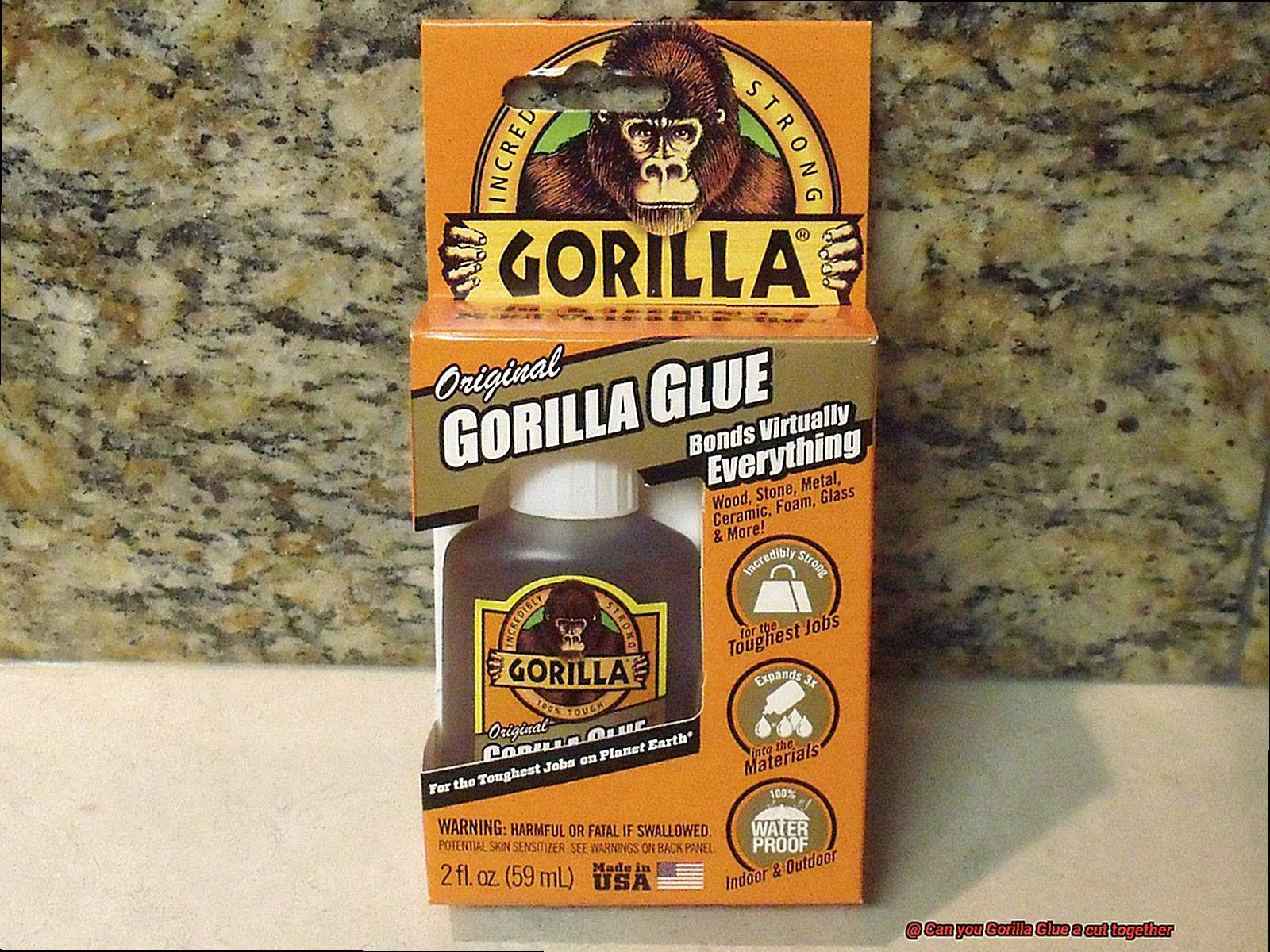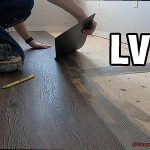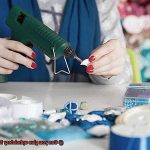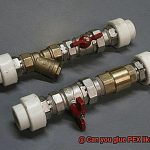Sometimes, they leave us with pesky cuts that need quick fixing. But what if you’re stranded without any first aid supplies? Cue the burning question: Can you seal a cut with Gorilla Glue? It might sound like an ingenious idea, but hold your horses.
There’s more to this sticky situation than meets the eye. In this blog post, we’ll dive deep into the topic, exploring the potential risks, benefits, and other juicy tidbits surrounding using Gorilla Glue for wound closure.
So, before you embark on any DIY medical adventures, let’s separate fact from fiction and arm you with all the info you need to make an informed decision.
What is Gorilla Glue?
Contents
- 1 What is Gorilla Glue?
- 2 Is Gorilla Glue Safe to Use on the Skin?
- 3 What are the Risks of Using Gorilla Glue on Cuts?
- 4 What is the Proper Treatment for Cuts or Wounds?
- 5 Does Gorilla Glue Provide an Effective Solution for Gluing Cuts Together?
- 6 Is There a Better Alternative to Gorilla Glue for Gluing Cuts Together?
- 7 How Can You Prevent Injury From Gluing Cuts Together with Gorilla Glue?
- 8 Conclusion
Renowned for its exceptional strength and versatility, this adhesive has become a staple in every DIY enthusiast’s toolbox. In this article, we will take a deep dive into the world of Gorilla Glue, exploring its features, uses, and why it has earned its reputation as the go-to adhesive for professionals and craftsmen.
Unleash the Power of Bonding:
At the core of Gorilla Glue lies its incredible bonding power. Whether you’re working with wood, ceramics, metal, or stone, this polyurethane adhesive has the ability to create a strong and durable bond. Its secret weapon? Foaming. As Gorilla Glue cures, it expands and fills gaps, ensuring a tight seal that stands the test of time. No matter the project, Gorilla Glue guarantees unbreakable bonds.
Variants for Every Need:
Recognizing that different projects require different formulations, Gorilla Glue offers a range of variants to suit specific materials and applications. The original Gorilla Glue is perfect for a wide array of surfaces, while the Super Glue variant provides instant bonding for smaller projects.
For woodworking aficionados, there’s Gorilla Wood Glue—a specially formulated adhesive that delivers unmatched bonding strength on wood surfaces.
Weather Any Storm:
One standout feature of Gorilla Glue is its remarkable water resistance. Once cured, this adhesive can withstand exposure to water without compromising its strength. This makes it ideal for both indoor and outdoor applications, ensuring your projects remain intact even in challenging environments. Rain or shine, Gorilla Glue has got you covered.
Tips for Success:
To achieve optimal results with Gorilla Glue, follow these key steps. First, ensure that the surfaces to be bonded are clean and free from dust or grease. Apply the glue evenly on both surfaces, then clamp them together until fully cured.
Use caution not to use too much glue, as excess foaming may occur during the curing process. Remember, patience is key—it typically takes 24 hours for the glue to reach its maximum strength.
Is Gorilla Glue Safe to Use on the Skin?
We all know the convenience and reliability of Gorilla Glue for various projects. But when it comes to using it on your skin, it’s a big no-no. In this article, we will explore the reasons why Gorilla Glue is not safe for skin application and why you should opt for specialized skin adhesives instead.
The Power of Polyurethane:
Gorilla Glue’s secret weapon lies in polyurethane, an ingredient that creates an exceptionally strong bond when exposed to moisture. While this quality may be perfect for wood and metal, it poses significant risks for your skin. Applying Gorilla Glue on your skin can lead to irritation, burning sensations, and even chemical burns – definitely not what you signed up for.
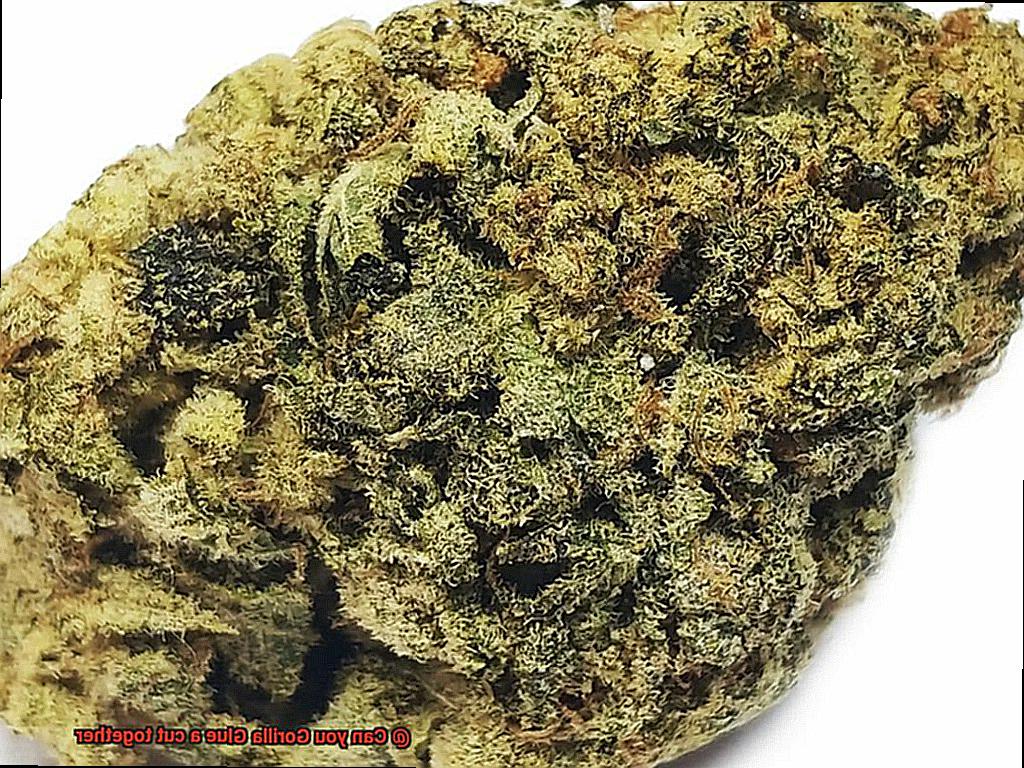
Expansion Woes:
Imagine applying glue to your skin and experiencing discomfort as it expands during the curing process – not a pleasant thought, right? Unfortunately, that’s exactly what happens with Gorilla Glue. As the adhesive sets, it expands, causing pain, discomfort, and potential damage to the surrounding tissue. Ouch.
Emergency Measures:
If you accidentally get Gorilla Glue on your skin, don’t panic. Quick action is crucial. Firstly, wash the affected area thoroughly with warm soapy water to remove as much of the glue as possible. Remember, never forcefully pull or separate any bonded skin – doing so can lead to further injury.
Seeking Medical Attention:
If irritation or other symptoms persist after washing off the glue, seeking medical attention is essential. A healthcare professional will assess the situation and provide appropriate treatment if necessary. Don’t take any chances with your precious skin.
Skin-Specific Solutions:
Fortunately, there are adhesives available on the market that are specifically designed for use on the skin.
These medical-grade adhesives are formulated to be safe and gentle, making them the ideal choice for bonding cuts or wounds together. When it comes to your skin, always trust the experts.
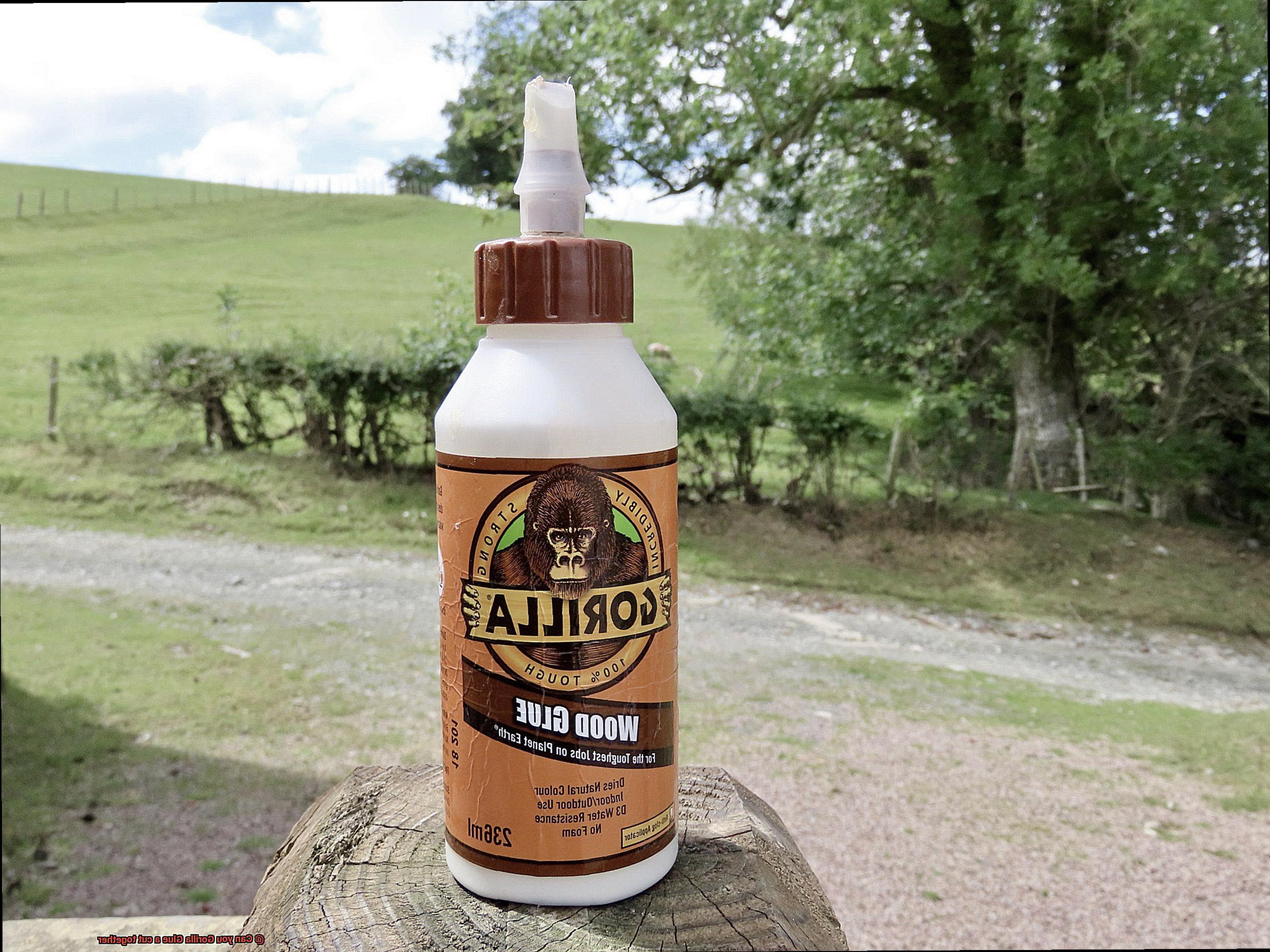
What are the Risks of Using Gorilla Glue on Cuts?

We’ve all experienced the frustration of a stubborn cut that refuses to stop bleeding or close properly. In moments of desperation, the temptation to use any adhesive on hand can be strong.
However, when it comes to using Gorilla Glue on cuts, it is crucial to resist that temptation. In this article, we will explore the significant risks associated with using Gorilla Glue on cuts and why it is best to leave wound care to medical professionals.
Toxicity Concerns:
Gorilla Glue contains chemicals like isocyanate that can cause skin irritation and allergic reactions. Applying this adhesive to an open wound increases the risk of these toxic chemicals entering your bloodstream, potentially causing more harm than good.
Trapping Bacteria and Infections:
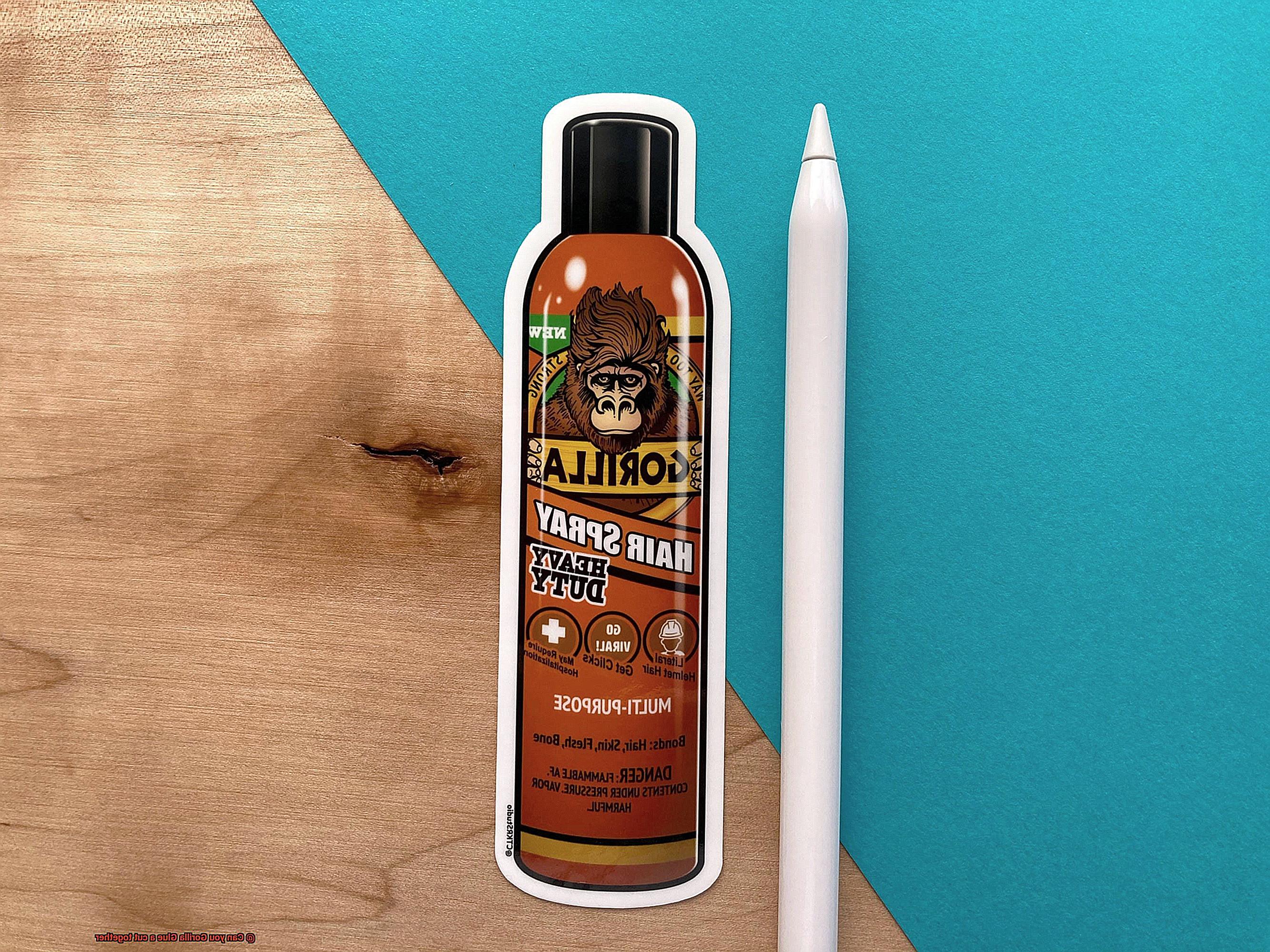
Using Gorilla Glue on a cut creates a seal that prevents proper healing and closure of the wound. This creates an ideal breeding ground for bacteria, significantly increasing the risk of infections that can complicate the healing process.
Lack of Medical-grade Properties:
Unlike specialized medical adhesives, Gorilla Glue is not designed for use on cuts or wounds. It lacks the flexibility and mobility required for optimal healing. Once it dries, Gorilla Glue becomes stiff and rigid, hindering the natural healing process of your cut.
Difficulty in Medical Treatment:
Applying Gorilla Glue to a wound can make it more challenging for healthcare professionals to clean and treat the injury effectively. Removing the glue can be painful and may cause additional damage to the surrounding tissue.
Delayed Healing:
Proper wound care involves cleansing the cut, applying appropriate dressings, and allowing it to heal naturally. By using Gorilla Glue, you interfere with this process and potentially prolong your healing time or even cause complications.
What is the Proper Treatment for Cuts or Wounds?
Cuts and wounds are an inevitable part of life’s journey, but knowing how to properly treat them is crucial for optimal healing and to prevent infection. While it may be tempting to resort to unconventional methods like Gorilla Glue to seal a cut, understanding the proper treatment options for cuts and wounds is essential. In this article, we will explore the steps to take when treating cuts and wounds and why household adhesives should never be used.
Defining Cuts and Wounds:
Cuts, caused by sharp objects, and wounds, which disrupt the integrity of the skin, come in various degrees of severity. From superficial scrapes to deep gashes, it is important to assess the extent of the injury before determining the appropriate treatment.
First Aid for Cuts:
The initial step in treating a cut is to apply direct pressure using a clean cloth or sterile gauze pad. This not only controls bleeding but also allows for a better view of the wound. Elevating the injured area above heart level can help minimize bleeding. Tourniquets should only be used as a last resort due to their potential to cause further damage.
Cleaning the Wound:
Thoroughly cleaning the wound is vital in reducing the risk of infection. Gently rinsing the cut with clean running water or saline solution effectively removes debris. However, it is crucial to avoid hydrogen peroxide or alcohol as they can impede healing and damage healthy tissue. Mild soap may be used if available, but must be thoroughly rinsed off.

Closing the Wound:
In cases of deep or gaping wounds, medical intervention may be necessary to facilitate proper healing. Stitches (sutures), staples, or adhesive strips (butterfly closures) are employed to bring the edges of the skin together. Seeking professional medical attention is crucial in these instances, as household adhesives like Gorilla Glue are inappropriate and may lead to complications.
Dressing and Bandaging:
After cleaning and closing the wound, applying an appropriate dressing is essential. This shields the wound from contamination and promotes healing. Non-stick sterile dressings, adhesive bandages, or gauze pads secured with medical tape or self-adhesive wrap are commonly used. Regularly changing the dressing and keeping the wound clean and dry are imperative for a successful healing process.
Recognizing Signs of Infection and Seeking Medical Help:
While most minor cuts can be treated at home, monitoring for signs of infection is crucial. Increased redness, swelling, warmth, pus formation, or worsening pain are indicators of an infected wound. If any of these signs are present or if the cut is deep, gaping, or caused by a dirty object, seeking immediate medical attention is recommended to prevent complications.
Does Gorilla Glue Provide an Effective Solution for Gluing Cuts Together?
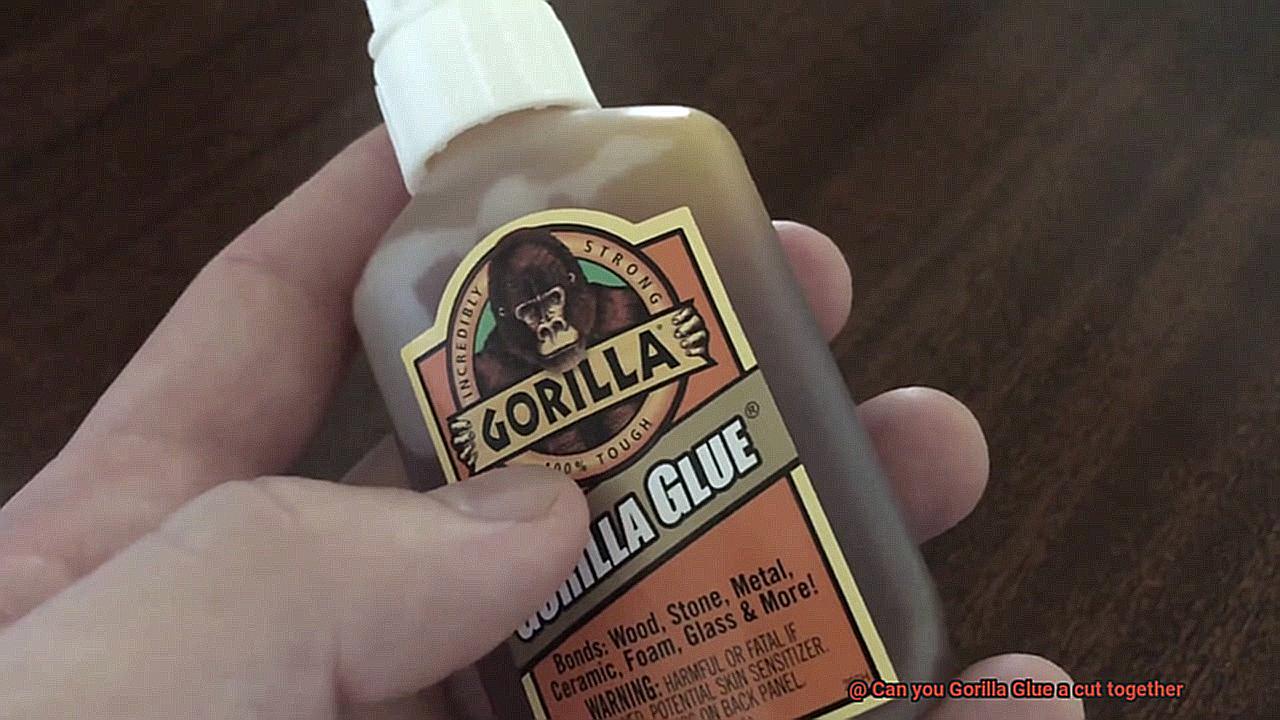
When it comes to cuts and wounds, it’s crucial to treat them properly and with caution. While Gorilla Glue is a popular adhesive for various materials, it should never be used to glue cuts together. In this article, we’ll explore why Gorilla Glue is ineffective and potentially harmful for this purpose.
Skin Sensitivity:
Gorilla Glue contains strong chemicals that can cause irritation and discomfort when applied directly to the skin. Seeking medical attention for cuts and wounds is always the best option as healthcare professionals have the right tools and knowledge to handle these situations safely.
Risk of Infection:
Using Gorilla Glue on cuts increases the risk of infection. The adhesive is not sterile and can introduce bacteria into the wound, leading to complications. Medical-grade adhesives specifically designed for closing wounds are sterile and promote healing while minimizing infection risks.
Insufficient Bonding:
Gorilla Glue may not provide a secure enough bond for a cut that requires proper healing. Proper medical care ensures that the wound is cleaned, disinfected, and closed properly, reducing the risk of complications such as infection or scarring.
Professional Medical Care:
Gluing cuts together should never be seen as a substitute for seeking appropriate medical care. Deep, gaping, or heavily bleeding cuts require immediate attention from healthcare professionals who can properly clean, disinfect, and close the wound.
Is There a Better Alternative to Gorilla Glue for Gluing Cuts Together?
When it comes to treating cuts, using the right adhesive is crucial. While Gorilla Glue may be popular for various materials, it is not the best choice for gluing cuts together. In this article, we will explore some alternative options that are safe, effective, and specifically designed for skin applications.
Medical-Grade Adhesive or Skin Glue:
For gluing cuts together, medical-grade adhesive is the top choice. This adhesive is safe for skin use and forms a strong, flexible bond. Widely used in medical settings for wound closure, it can effectively seal small cuts and lacerations without needing stitches or sutures.
Liquid Bandage:
An excellent alternative to Gorilla Glue is liquid bandage. When applied directly to the skin, it forms a thin, flexible film that seals the cut and promotes natural healing. This waterproof barrier protects against bacteria while allowing the wound to breathe and heal naturally.
Surgical Adhesive Tapes:
Thin, flexible surgical adhesive tapes provide support to wound edges while allowing for natural healing and minimizing scarring. These non-invasive strips are suitable for small cuts and abrasions.
Butterfly Closures or Steri-Strips:
Butterfly closures, also known as Steri-Strips, are small adhesive strips applied across a cut to hold it closed. They are particularly useful for relieving tension in cuts or wounds in areas where traditional bandages may not adhere well. Butterfly closures offer support and facilitate natural healing without requiring stitches.
How Can You Prevent Injury From Gluing Cuts Together with Gorilla Glue?
When it comes to gluing cuts together, safety and effectiveness should be your top priorities. While Gorilla Glue may be known for its strength, it is not suitable for skin applications. In this comprehensive guide, we will explore alternative options specifically designed for wound closure. These alternatives provide the right balance of safety, flexibility, and support to ensure your cut heals properly without risking further injury.
Preparation:
- Assess the severity of the cut: Determine if your cut is superficial and shallow enough for gluing or if it requires medical attention.
- Clean the cut thoroughly: Use mild soap and water to cleanse the cut and remove any dirt or debris. This reduces the risk of infection and promotes better adhesion.
- Keep the cut dry: Moisture can interfere with adhesive properties, so ensure the cut is completely dry before applying any adhesive.
Application:
- Choose the right adhesive: Opt for medical-grade adhesive, liquid bandage, surgical adhesive tapes, butterfly closures, or Steri-Strips. These options are specifically designed for skin use and offer safe and effective wound closure.
- Apply a small amount: Use a thin layer of adhesive on one side of the cut. Applying too much can cause overflow and potential contact with healthy tissue, leading to complications.
- Gently press the cut together: Carefully bring the opposing sides of the cut together and hold them in place for a few minutes until the adhesive starts to set.
Aftercare:
- Monitor closely: Keep a close eye on the healing process. If you notice signs of infection such as increased pain, redness, swelling, or discharge, seek medical attention immediately.
- Follow proper wound care: Gluing a cut together is a temporary solution. Consult a healthcare professional for proper wound care and treatment.
- Perform a patch test: Before using any adhesive on a cut or wound, perform a patch test on a small area of skin to check for any adverse reactions.
H235IEq3Ozg” >
Also Read: Does Gorilla Glue Work on Plastic?
Conclusion
In conclusion, while Gorilla Glue may be a versatile and powerful adhesive for various materials, it is crucial to understand that using it to glue cuts together is not recommended. The potential risks far outweigh any perceived benefits. Gorilla Glue contains chemicals that can cause skin irritation, burning sensations, and even chemical burns when applied directly to the skin. These unpleasant side effects should be reason enough to avoid using it on cuts.
Moreover, the expanding nature of Gorilla Glue during the curing process can lead to discomfort and potential damage to surrounding tissue. Imagine the sensation of your skin being pulled tight as the glue dries and expands – certainly not an experience you want when trying to heal a cut.
Furthermore, using Gorilla Glue on cuts creates a seal that hinders proper healing and closure of the wound. This seal increases the risk of bacterial growth and infections, which can further complicate the healing process. Additionally, Gorilla Glue lacks the flexibility and mobility required for optimal healing. Once dried, it becomes stiff and rigid, inhibiting the natural healing process.
Instead of relying on Gorilla Glue for wound closure, it is essential to seek appropriate medical care. There are medical-grade adhesives specifically designed for skin applications that provide safe and effective wound closure. Options such as liquid bandage, surgical adhesive tapes, butterfly closures, or Steri-Strips offer flexibility and support while allowing for natural healing.
Remember that proper wound care involves more than just gluing a cut together. It includes cleaning the cut thoroughly with mild soap and water, applying an appropriate dressing or adhesive, monitoring for signs of infection diligently, and seeking medical attention if necessary. Prioritizing safety and effectiveness in treating cuts or wounds ensures optimal healing without risking further injury.
So, next time you find yourself with a cut in need of closure, remember: leave Gorilla Glue for other projects and trust in medically-approved alternatives for proper wound care.

